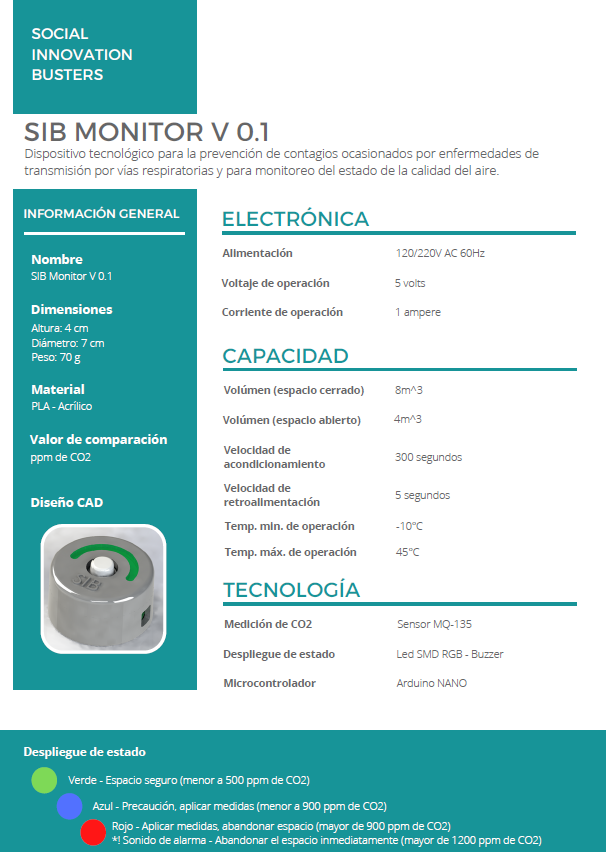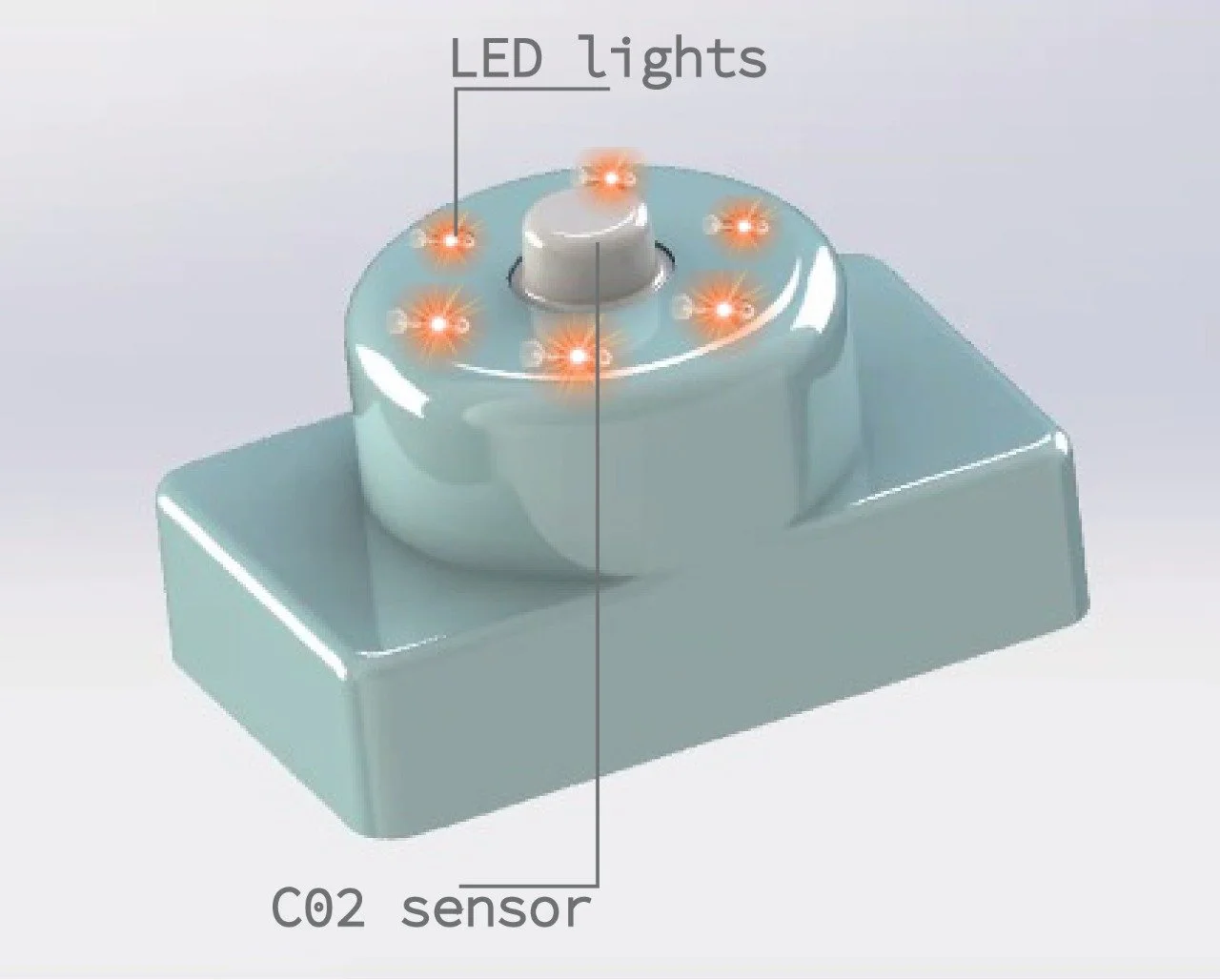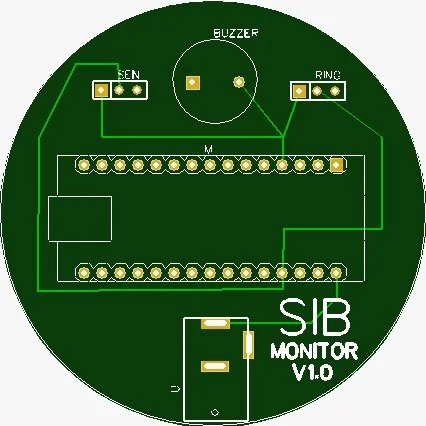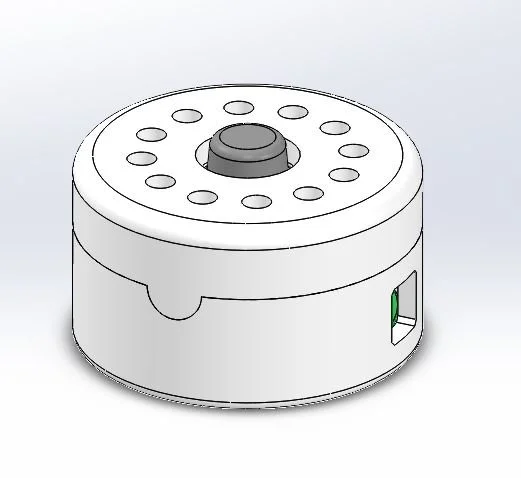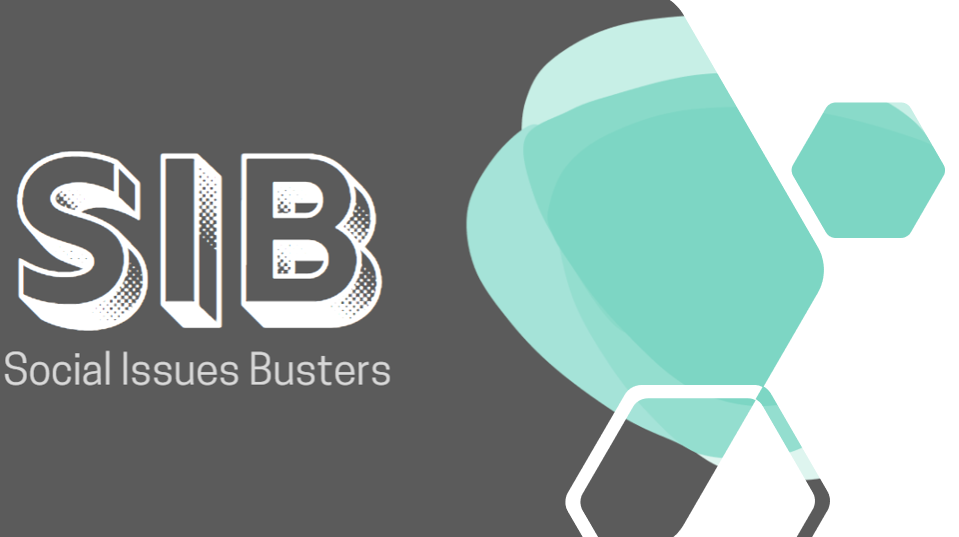
SIB Monitor.
Monterrey Institute of Technology and Higher Education.
Period of the project: 2021 (1 year)
Project Description.
The SIB Monitor was born from a real-world need: a teammate’s family member, a restaurant owner, contracted COVID-19 in December 2020, highlighting the urgency of air quality control in closed spaces.
Inspired by epidemiologist Alejandro Macias’ recommendation to use CO2 measuring devices to regulate occupancy, the team identified a critical gap—existing devices were too expensive for small businesses, and many lacked guidance on how to respond when CO2 levels became unsafe.
The SIB Monitor solves both problems. It’s an affordable device that measures CO2 levels, assesses the risk of COVID-19 transmission, and provides clear, actionable guidelines through a color-coded alert system.
To ensure real-world impact, the team interviewed 15 restaurant owners and an expert, receiving enthusiastic feedback and a key suggestion: an app to help customers find establishments using the monitor. Moving forward, the team plans to develop a fully functional prototype, integrate the app, and test with target users before seeking regulatory approval.
This project has not only addressed a pressing public health challenge but also reinforced the power of user-driven design, mentorship, and interdisciplinary collaboration.
Contributions.
Project Results.
Regional Recognition
Instituto de Emprendimiento Eugenio Garza Laguera
ESi Runway Occident Region - 1st Place
We continued developing the project at the Social Entrepreneurship HUB, further refining our concept and implementation.
Acknowledgements.
Social Innovator Busters Team: For demonstrating that a multidisciplinary approach, driven by passion and a shared commitment to a meaningful cause, can lead to groundbreaking innovations and tangible positive change.
Some facts.
The team met online through virtual classes during the pandemic, forming connections despite the remote setting.
The professor reorganized the groups to create more diverse teams, leading to our final team and success.
Only two reunions were held in person, ensuring proper distancing and safety measures.
The project was designed to last only one semester, but we continued working on it for another six months.
Over time, members followed different paths, causing the project to pause, but many of us still stay in touch, and even worked in other projects and collaborations together.

